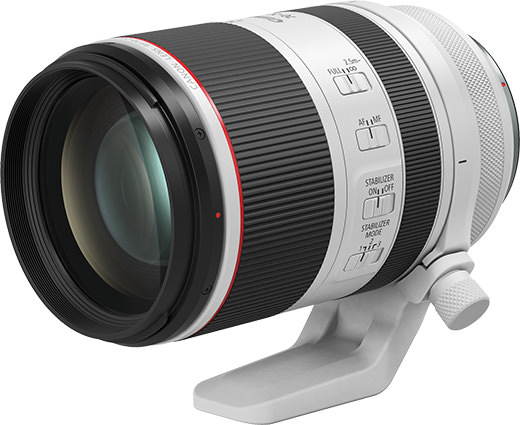- Specifications
- Block diagram
| Marketed | November 2019 |
| Original Price | Open price |
| Lens Construction (group) | 13 |
| Lens Construction (element) | 17 |
| No. of Diaphragm Blades | 9 (circular aperture) |
| Minimum Aperture | 32 |
| Closest Focusing Distance (m) | 0.7 |
| Maximum Magnification (x) | 0.23 (at 200mm) |
| Filter Diameter (mm) | 77 |
| Maximum Diameter x Length (mm) | Approx. 89.9×146.0 |
| Weight (g) | Approx. 1,070 |
Making the optical design more compact by taking advantage of the RF mount’s wide diameter and short back focus1 to place a large-diameter lens close to the imaging plane on the camera side, the RF70-200mm F2.8 L IS USM employs an extending-barrel zoom design and exploits the effective positioning of two aspherical lenses to realize the world’s shortest length2 and lowest weight2 among lenses for interchangeable-lens cameras equipped with full frame sensors with a focal length range from 70mm to 200mm and a maximum aperture of f/2.8.
Featuring an optical design that incorporates 17 elements in 13 groups, including three UD (Ultra Low Dispersion) lenses, one Super UD lens3, one aspherical UD lens and one glass-molded aspherical lens, the RF70–200mm F2.8 L IS USM mitigates various aberrations that result in image degradation, to achieve high image quality across the entire zoom range.
The Canon RF70–200mm F2.8 L IS USM features a lens group comprising a focus lens and floating lens4 that are moved independently by two Nano Ultra-Sonic Motors (USM) for optimal control. Furthermore, the lens is Canon’s first to employ electronic floating focus. In addition to achieving a minimum focusing distance of 0.7m, the lens realizes both high-speed AF for stills shooting and smooth AF for video capture.
1 A short distance between the optical axis from the vertex of the rear lens element to the imaging plane when focused to infinity.
2 World’s shortest refers to when the lens is retracted. As of October 23, 2019, based on a Canon survey.
3 Super UD lenses realize significant improvements in performance over UD lenses. Comprising two UD lenses, a super UD lens produces results with almost the same as the characteristics as fluorite.
4 Lenses that move in conjunction with changes in focal length to correct aberrations.

Aspherical lens Super UD Lens UD lenses
UD Aspherical lens IS unit SWC


